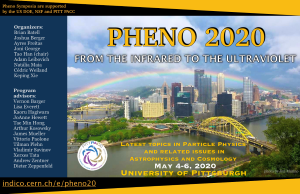Speaker
Description
If large enough extra dimensions exist, the fundamental gravity scale may be as low as a few TeV to allow for the production of microscopic black holes in collisions of high energy particles. Cosmic neutrinos may reach the energy up to tens of EeV, which translates to the center of mass energy of more than 100TeV in neutrino-nucleon scattering, rendering the next generation of neutrino telescopes the ideal places to test large extra dimensions. We identify a number of unique signatures of microscopic black holes as they would appear in future neutrino observatories such as IceCube-Gen2 and the Pacific Ocean Neutrino Explorer, including new event topologies, energy distributions, and unusual ratios of hadronic-to-electronic energy deposition. In addition, microscopic black holes may evaporate into all Standard Model and dark matter degree of freedom through Hawking radiation. We perform the first numerical black hole spectroscopic study of the dark sector in the next generation of colliders assuming the fundamental scale of 10 TeV and find that the missing momentum signatures can reveal the existence of any new light particle, regardless of the strength of its coupling to the Standard Model.
